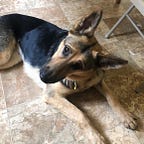History of One Health
“When the world is collectively at risk, defence becomes a shared responsibility” — Dr. Margaret Chan
While One Health has only recently become an important issue, it is a concept that has been around for centuries.
In ancient Greek and Roman times they recognized “similarities between certain human and animal diseases” and those who practiced medicine treated both animals and humans without distinction. Today’s “demarcation between human and animal medicines” began around the middle ages. Over the years methodology from human medicine was applied to animals and vice-versa. Despite such knowledge transfer and sharing, human and animal medicine “developed in isolation of each other due to negligence of functional association between animal and human physicians”.
The 16th and 17th century saw the revival of “One Medicine”, and environment health joined animal/human health; physicians acknowledged that the “environment played a great role in disease spread in human and animal”. But again, over time, One Medicine was discarded and the various medical fields drifted further apart.
The recent popularity of such collaboration has arisen due to the increasing number of new emerging diseases that are detrimental to all species. “The association between man, animal and biotic and or (abiotic) environment is multidimensional”. The CDC created the concept of Veterinary Public Health (VPH) in order to address the concerns of dangerous disease transmission between animals and humans. VPH is “multidimensional and is already connected Veterinary medicine, animal production and has potential to connect outside with global public health, wild life and environment”.
Finally in 2004, the Wildlife Conservation Society brought forth today’s “One World-One Health” initiative in response to the need for successful action against emerging zoonotic diseases that requires effort from both human, animal, and environmental agencies.
The question is whether this “One Health” initiative will crash and burn like its predecessors or do we now fully appreciate its importance and value to us all?
Source: Das, U. (2015). Genesis of “Veterinary Public Health” and Route to “One Health.” Intas Polivet, 16(2), 182–186.
